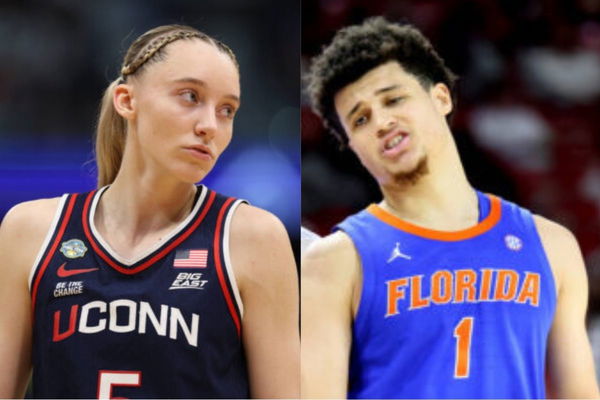

33.69 million viewers and $1.38 billion in revenue. That was the scale of March Madness in 2024. The men’s championship saw UConn defeat Purdue 75-60, drawing 14.82 million viewers. But in a historic twist, it was the women’s final—South Carolina vs. Iowa that stole the show, pulling in a staggering 18.87 million viewers and becoming the most-watched basketball game—college or pro since 2019.
Behind those numbers is a billion-dollar machine fueled by media rights and sponsorships, with CBS and Turner locked into an $8.8 billion deal through 2032. Yet, the athletes who create the madness still don’t receive a direct cut. And the revenue gap between men’s and women’s tournaments remains wide—on paper, at least.
But change is in the air. With NIL deals surging, a new unit system for women’s teams, and ratings momentum on their side, the 2025 tournament could flip the script entirely. As South Carolina gears up to face UConn, and Houston takes on Florida on the men’s side, one question looms large: Could this be the year the women’s game not only breaks records—but also breaks the bank?
ADVERTISEMENT
Article continues below this ad
Do March Madness Players Get Paid?
March Madness is a multi-billion-dollar business. According to Investopedia, the NCAA earned $1.38 billion in revenue in fiscal year 2024—most of it fueled by March Madness. The men’s tournament alone accounted for more than $900 million. But here’s the kicker: the players on the floor don’t see a dime of that directly.
Instead, money is funneled through a “unit” system. For the men’s tournament, every game played (excluding the championship) earns the team’s conference a unit worth about $2 million, paid out over six years. That’s why a Final Four run isn’t just about glory—it’s about generating financial gravity. In 2024, the total amount of money awarded for men’s tournament games stood at $226 million.

via Imago
NCAA, College League, USA Basketball: NCAA Tournament West Regional-Texas Tech at Florida Mar 29, 2025 San Francisco, CA, USA Florida Gators forward Thomas Haugh 10 celebrates during the second half against the Texas Tech Red Raiders during the West Regional final of the 2025 NCAA tournament at Chase Center. San Francisco Chase Center California United States of America, EDITORIAL USE ONLY PUBLICATIONxINxGERxSUIxAUTxONLY Copyright: xKylexTeradax 20250329_tcs_es2_147
The Southeastern Conference (SEC), for instance, had teams play 17 games and took home an approximate of $34 million. And in 2025, with 14 SEC teams qualifying, the payout pie only grows, estimated to be $26 million.
Broadcast rights are the powerhouse behind these figures. Turner and CBS alone pumped $873 million into the NCAA in 2024, underscoring how much the media landscape values men’s hoops. And while these media giants pay, the athletes still wait. As of now, NCAA players don’t earn salaries from tournaments. Though thanks to a U.S. Supreme Court ruling, ( National Collegiate Athletic Association v. Alston et al.) they can now earn through name, image, and likeness (NIL) deals—a long-overdue shift following decades of restrictions.
What’s your perspective on:
Is it time for NCAA players to get a direct cut from the billion-dollar March Madness pie?
Have an interesting take?
Still, the pending $2.78 billion class-action settlement on athlete compensation is expected to reshape college sports’ financial future. But for now, even with record-breaking ratings and jam-packed arenas, the direct payout system favors conferences—not players.
Read More: Who Are Chloe Kitts’ Parents?
How Much Money Does Women’s March Madness Make?
It took time, pressure, and a cultural shift—but in 2025, the NCAA finally introduced a unit system for the women’s tournament too. Now, for each game played (excluding the final), a women’s team earns its conference a unit worth about $113,000, distributed over three years.
It’s a clear step toward equity. But the difference is glaring when you stack it against the men’s side. A women’s team that dances all the way to the Final Four could earn around (according to Market Watch) $1.26 million for its conference. Compare that to the $8 million a similar men’s run would generate. The court might be the same size, but the payout? Not quite.

via Imago
NCAA, College League, USA Womens Basketball: Marquette at Connecticut Mar 2, 2025 Storrs, Connecticut, USA UConn Huskies UConn Huskies guard Kaitlyn Chen 20 is recognized during senior night along side head coach Geno Auriemma and her family after the game against the Marquette Golden Eagles at Harry A. Gampel Pavilion. Storrs Harry A. Gampel Pavilion Connecticut USA, EDITORIAL USE ONLY PUBLICATIONxINxGERxSUIxAUTxONLY Copyright: xDavidxButlerxIIx 20250302_db2_sv3_056
Media rights reveal the gap even clearer. CBS and TNT Sports pay an average of $1.1 billion annually for the men’s tournament. ESPN, by contrast, pays just $65 million per year for the women’s. Victor Matheson, a sports economics professor at the College of the Holy Cross, put it plainly:
“Historically, the NCAA made all its money by selling the men’s March Madness TV rights — about a billion dollars a year — and they didn’t even bother to individually price anything else out… It’s a gigantic difference.”
Still, change is in motion. For 2025, the women’s March Madness teams will receive 26% of the TV deal, mirroring the men’s tournament when the unit system was first introduced in 1991. That adds up to $15 million in prize money—with an increase to $25 million (or 41%) by year three.
Yet, this money goes to the conferences, not the players. Meaning that a transcendent star like UConn’s Paige Bueckers, or a top-tier talent like USC’s JuJu Watkins, could carry her team to the Final Four, generate revenue for her conference, and still not receive a single direct payout.
Even more jarring? In 2024, the women’s title game outdrew the men’s final in viewership (thanks to the Caitlin Clark effect)—18.87 million people watched South Carolina defeat Iowa, while just 14.82 million tuned in for UConn vs Purdue. The fans are showing up. The TV numbers are climbing. But the dollars haven’t yet caught up.
ADVERTISEMENT
Article continues below this ad
Final Buzzer
So, to the question—will UConn and South Carolina’s finalists earn equal to Houston and Florida? The short answer: not yet.
The system is evolving, and with the introduction of units for women’s teams and NIL deals for athletes, progress is tangible. But the current payout gap—powered by legacy TV deals and decades of disparity—remains wide.
ADVERTISEMENT
Article continues below this ad
The game has always been played on hardwood. Now, it’s time the accounting books reflect the same grit, grind, and glory. Because in March, legends are made. And as such, the money should also follow.
ADVERTISEMENT
ADVERTISEMENT
ADVERTISEMENT
ADVERTISEMENT


Is it time for NCAA players to get a direct cut from the billion-dollar March Madness pie?